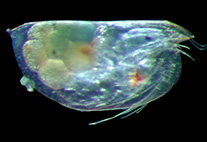Abstract
Quercorhabditis rajouriensis gen. n., sp. n. is described and illustrated. Distinctive characters include a labial region set off by a constriction and wider than adjoining body, heavily sclerotized cheilostom with arched rhabdions, barely differentiable stegostom, amphidelphic gonads, spicules with a free dorsal arm, and a leptoderan bursa with ten pairs of bursal papillae. The new genus resembles Diploscapteriodes Rahm, 1928 in the shape of cheilostom, presence of amphidelphic gonads, leptoderan bursa and long conoid tail. However, it can be differentiated from the latter genus in the shape of labial region, cheilostomal sclerotization, absence of ridge-like tooth in gymnostom, having spicules with a free dorsal arm, somewhat boat-shaped gubernaculum and in having ten pairs of bursal papillae. The new genus also resembles Curviditis (Dougherty, 1953) Andrássy, 1983, Rhabditella (Cobb, 1929) Chitwood, 1933 and Metarhabditis Tahseen et. al., 2004 in having spicules with free dorsal arm. However, it can be differentiated from these related genera by its heavily cuticularised cheilostom with arched rhabdions and barely differentiable stegostom. The new genus can further be differentiated from Curviditis and Rhabditella in having a well developed bursa and from Metarhabditis by its leptoderan bursa with ten pairs of bursal papillae arranged in 3+4+3 arrangement.

